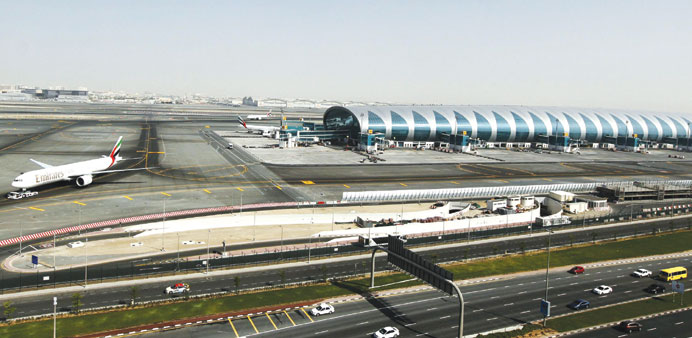|
|
Dubai is planning to ramp up the passenger handling capacity at its airports as the Gulf emirate anticipates traffic to grow at a faster clip in coming years, helped by a resurgent economy and flag carrier Emirates Airline’s increasing success at funnelling customers through its hub.
Stronger trade and tourism have revitalised Dubai after its economy was left struggling in the aftermath of the global financial crisis in 2008. The emirate is also benefiting from a safe-haven status amid political unrest in the region.
Its credentials as a transport hub played a key role in Dubai’s recovery and the emirate is now looking to further increase capacity at its two international airports as it eyes economic expansion, according to the chief executive of Dubai Airports Co, which manages the facilities.
Dubai International, its main airport, is planning to add capacity to handle more than 100mn passengers by 2018, up from a current capacity of about 60mn and a previous goal of 90mn, by continuing with plans to build a fourth concourse and by improving the facility’s operations, Paul Griffiths, chief executive of Dubai Airports, told The Wall Street Journal in a recent interview.
The government-owned company will also look to accelerate the capacity expansion of the new Al Maktoum International Airport, which is currently forecast to manage 160mn passengers by 2030, and potentially move Emirates to the new facility before 2020, Griffiths said. Emirates had originally been pencilled in to move from Dubai International to the new airport in 2027.
“The idea is that we want to be able to move the Emirates hub sooner than originally forecast,” said Griffiths. “Everyone wants to be around the Emirates hub so our focus now is to develop the masterplan that enables us to create enough capacity at Dubai World Central to migrate the hub of Emirates.”
Griffiths did not disclose the cost of accelerating the build of Al Maktoum Airport, which is part Dubai World Central, a 140 sq km planned development of residential housing, logistics and aviation industries. But the reworked airport would be “lower cost” and handle 80mn passengers before 2020, he said.
The total infrastructure costs for Dubai World Central were originally forecast at about $33bn. Griffiths said the company would also extend the end-target for Al Maktoum Airport beyond 160mn passengers by a “significant” amount, but said the company was still “working on the numbers”. Dubai World Central first opened for cargo operations in 2010 and will begin passenger operations in October.
Emirates, which is the world’s largest airline by international traffic and a key component of Dubai’s ambitions, continues to grow at a rapid pace with passenger traffic increasing 16% to 39.4mn in the year to March 31. It had 198 aircraft on order in May worth more than $71bn at list prices.
Dubai International, which currently hosts Emirates, became the world’s second busiest for international traffic in February handling some 4.8mn passengers, up 15% on year, according to Airports Council International, behind only London’s Heathrow, which managed about 5.6mn. The Dubai hub handled a total of 57mn passengers last year, and Dubai Airports forecasts it will surpass 65mn this year, while Heathrow catered to 70mn last year.
Emirates currently makes up about 64% of passenger traffic through Dubai International, while 10.7% of the traffic is accounted for by low-cost carrier Flydubai, Griffiths said.

